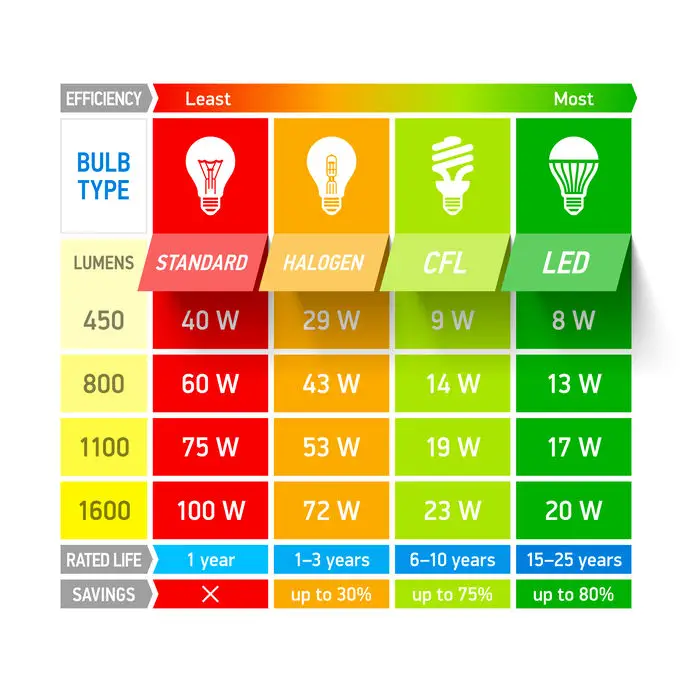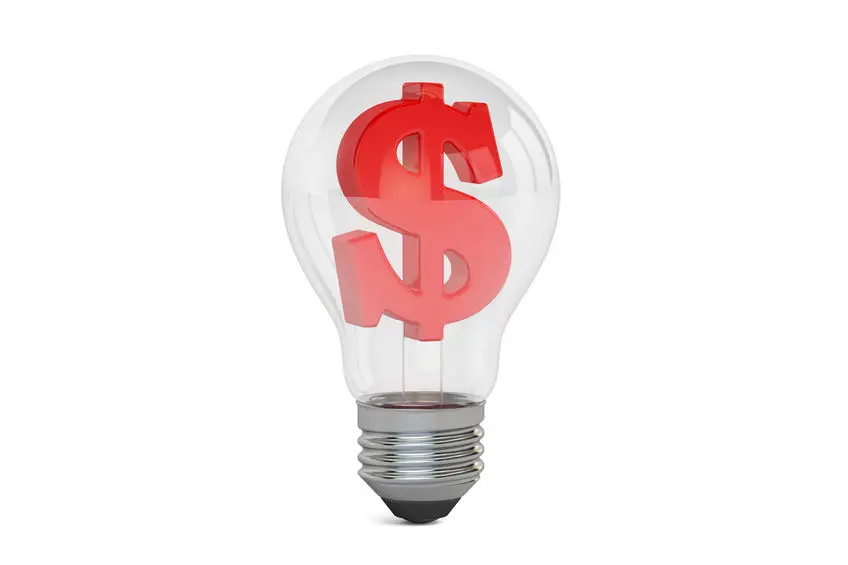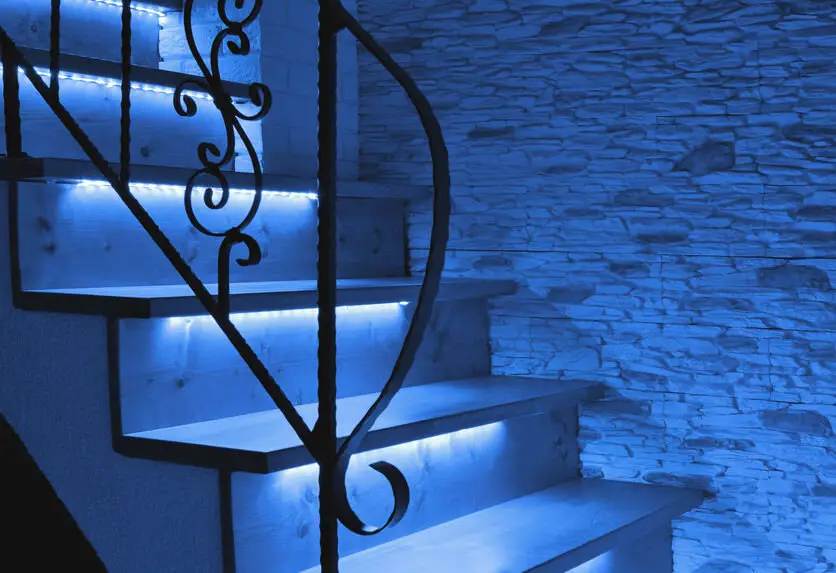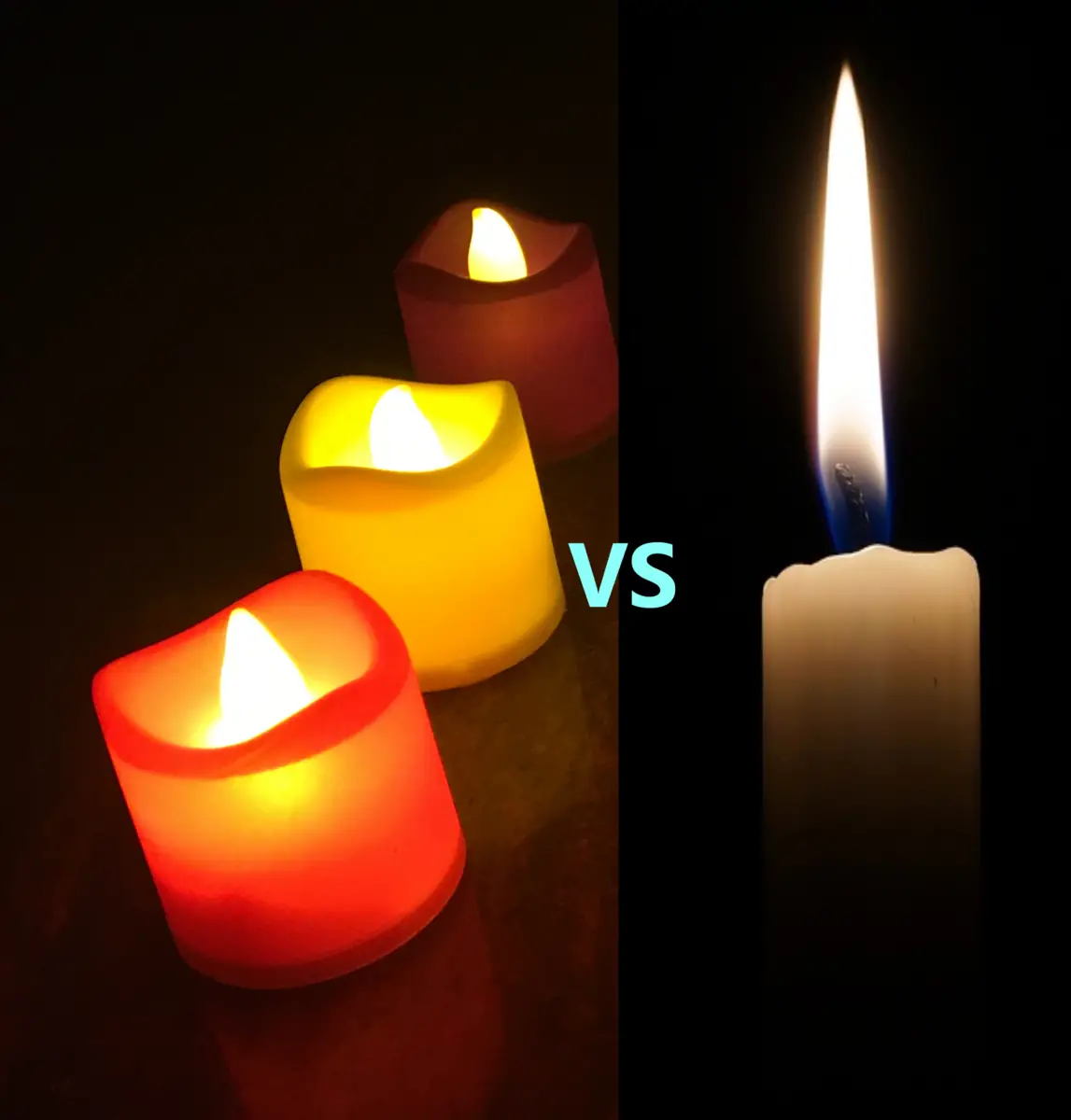Are Smart Bulbs Energy Efficient?
When it comes to lighting there are many options out there to consider, and it can all entirely depend on what you are looking for.
Smart bulbs are a rather new option since they only started becoming relevant in recent times. Smart bulbs in their most basic form are defined as light bulbs with the ability to be controlled remotely, which usually means they have some form of internet access in order to achieve this.
In general, smart bulbs are a pretty energy-efficient lighting solution. They use LED technology to produce light, meaning they convert over 80% more energy into light than incandescent bulbs. That said, smart bulbs tend to be roughly 25% less efficient than regular LED bulbs due to their additional functions.
Smart Bulbs Use Energy When Turned Off
One thing to consider about smart bulbs is that, unlike traditional bulbs, actually use energy while turned off. This is a property called “vampire power”, which refers to the power an appliance uses while not actively being used. Other examples of appliances like this include TVs and computers.
The reason why smart bulbs use energy while turned off is rather simple. It is because they have to be able to receive commands remotely at all times, which means they need to be active at all times. Therefore, they will always use a small amount of electricity.
Smart lights generally consume between 0,2-0,5W per hour of standby use. This means that they will use anywhere between 4,8-12W over the course of a day, which equates to fractions of a cent when compared to electricity prices.
If you aren’t yet familiar with Watts (W), it is a unit that describes an amount of electrical energy based on the amount of amps and level of voltage a material/appliance is put through.
A breakdown of how much energy a smart bulb uses on standby looks like this.
| Standby Energy Usage | 0,2W | 0,3W | 0,4W | 0,5W |
|---|---|---|---|---|
| 1 Hour | 0,2W | 0,3W | 0,4W | 0,5W |
| 1 Day | 4,8W | 7,2W | 9,6W | 12W |
| 1 Week | 33,6W | 50,4W | 67,2W | 84W |
| 1 Month | 144W | 216W | 288W | 360W |
| 1 Year | 1728W | 2592W | 3456W | 4320W |
The standby energy usage of any smart bulb should be listed in the bulb technical data and more often than not it will be in the 0,2-0,5W range.
The average electricity cost across most of the world is around $0,2 per kWh. 1 kWh is equal to 1000W. This means that in this chart, you can simply divide any number in it by 1000 and then multiply it by 0,2. This number will give you the cost in dollars instead of the energy used.
As we have now established, smart bulbs definitely use some energy while not active, which does hurt them in terms of their energy efficiency since normal bulbs don’t do this.
Later on, in this article, we will discuss how much it impacts their overall efficiency and how they fair against traditional bulbs.
Click here for a full article on Why Smart Bulbs Use Electricity When Turned Off.
How Much Energy Do Smart Bulbs Use?
Smart bulbs make use of LED technology, which means that in general they don’t use a lot of energy. There are however a few factors that will play into how much energy a bulb like this will use.
We have already discussed that the amount of power it consumes during standby can depend, but another important factor to discuss is how strong the bulb actually is.
This refers to the amount of “lumen” (lm) the bulbs produce, which is simply a quantified amount of light. This is normally referred to using its wattage, so for example 40W or 75W. For the example, below we will look at 1600lm, which is the equivalent of a 100W incandescent light.

We use lumen to express the strength of the bulb because it makes more sense to judge the strength based on the amount of light it generates instead of how much energy it consumes.
It also makes it easier to determine what lights are more efficient than others, since two bulbs can produce the same amount of lumen but use a different amount of energy to get there.
In order to determine how much energy a smart bulb will use you can simply collect data of how much power it uses on standby and the actual bulb power and then run some calculations.
For this example, we will assume that the bulb will be actively used 12 hours a day and turned off the other 12 hours while being plugged in and ready to receive commands at all times.
| Energy Calculation Of Smart LED Bulb | Smart LED Bulb |
|---|---|
| Marked Wattage | 17W |
| Marked Standy Wattage | 0,4W |
| Power Used When Turned Off For 12h | 4,8W |
| Power Used When Turned On For 12h | 204W |
| Total Power Used In 24h | 208,8W |
| Cose Of 24h Of Use (@$0.2 per kWh) | $0,04176 |
Using the bulbs marked wattage and their standby power you can run these calculations easily. All you do is multiply the marked wattage by the number of hours the bulb is producing light and add it together with the marked standby wattage multiplied by the number of hours the bulb is on standby.
Smart Bulb Efficiency Compared To Regular Bulbs
Now that we have discussed how much energy a smart bulb uses we can look at how much that is compared to traditional bulbs.
To do this we will set a few more parameters. First off we will make sure they are compared by the same lumen, which we will set at 1600lm.
Secondly, we will add time to the equation. For the purpose of longevity, this is an important metric to add. Therefore we will run this calculation for a total of 10000 hours of use, seeing as it will give much clearer results.
When taking all of this into account we get a table that looks like this:
| Comparison @1600 lumen | Smart LED Bulb | Regular LED Bulb | CFL Bulb | Halogen Bulb | Incandescent Bulb |
|---|---|---|---|---|---|
| Marked Wattage | 17W | 13W | 25W | 72W | 100W |
| Marked Standby Power | 0.4W | 0W | 0W | 0W | 0W |
| Power Used When Off 12h | 4,8W | 0W | 0W | 0W | 0W |
| Power Used When On 12h | 204W | 156W | 300W | 864W | 1200W |
| Total Power Used In 24h | 208,8W | 156W | 300W | 864W | 1200W |
| Total Power Used In 10000h | 87,1kWh | 65,1kWh | 125,1kWh | 360,3kWh | 500,4kWh |
| Energy Used Compared To Smart Bulbs | 1 | 0,747 | 1,436 | 4,136 | 5,745 |
With these calculations, we can see what the power consumption differences look like between these common bulbs. While regular LED bulbs are more efficient than smart bulbs, smart bulbs are still vastly more energy efficient than most other commonly available bulbs.
Smart bulbs use approximately 83% less energy than incandescent bulbs do in to produce the same amount of light. They also use 30% and 76% less energy than CFL and halogen bulbs.
Smart Bulbs Vs LED Bulbs
While smart bulbs are pretty efficient compared to most traditional bulbs, it still doesn’t beat the efficiency of a regular LED bulb, but why is this?
Smart bulbs use the same technology as pure LED bulbs to produce light. They both make use of Light Emitting Diodes (LEDs) in order to create light.
The difference between them is that smart bulbs are built to have more functions than regular LED bulbs. Some of these features may include:
- The ability to control smart bulbs remotely
- The ability to change its colour
- The ability to change its colour temperature
- The ability to be programmed to follow a schedule
What this essentially boils down to is that smart bulbs lose out on efficiency as they gain functionality. This happens in a few different ways.
One of the ways this happens has to do with the efficiency of regular LEDs. A standard LED chip is extremely efficient at converting energy into light, however, when you start tampering with the construction of LEDs you start to lose out on efficiency.
This is especially true with LED bulbs with RGB colour capabilities. In order to achieve bulbs with RGB built into them (which most smart bulbs are) you have to make use of different coloured diodes and have them work together in a non-natural way in order to produce the colour you request. This ends up causing inefficiencies as the different coloured LEDs will be active unevenly.
As previously mentioned, smart bulbs also use electricity while they are not turned on, while regular LED bulbs don’t. This itself only causes smart bulbs to use around 3% more energy than LED bulbs, which is not much but is enough for it to be mentioned.
For these reasons combined, regular LED bulbs end up being around 25% more efficient than smart bulbs.
Summary
Smart bulbs are generally a pretty efficient lighting option. They are more often than not less efficient than regular LED bulbs, but they offer up enough functionality to make up for that in most cases.
From a pure efficiency standpoint, regular LED bulbs easily win, seeing as they are roughly 25% more efficient at simply producing light than smart bulbs are.
This said if the option is between a smart bulb and a traditional bulb the smart bulb will almost always be more energy efficient. However, it may not be more cost-efficient in most cases. Click here for a Cost Analysis of Smart Bulbs.





